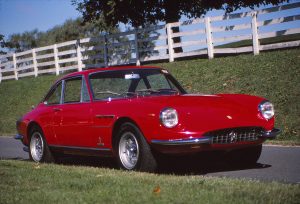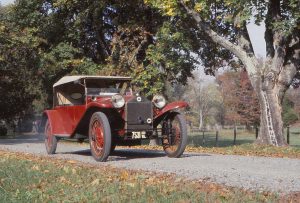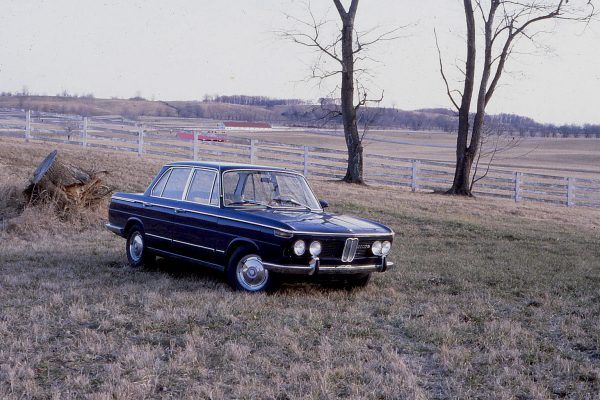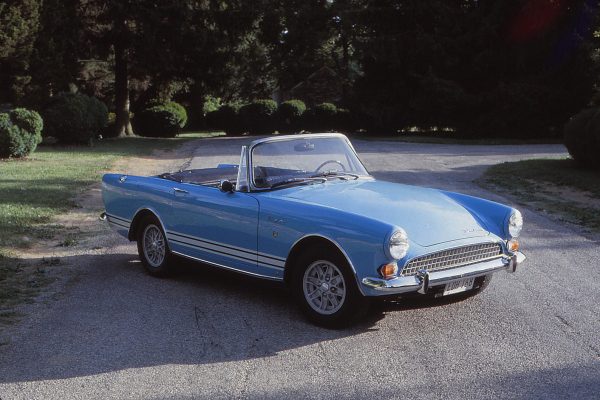Originally published in AutoWeek July 1, 1986
Smoother than prom night velvet, slicker than satin sheets, more exotic than a night in Bangkok, that’s the Lamborghini 400GT 2+2. Pull out the thesaurus, plagiarize McCahill and Purdy, the car is that good. Better, perhaps, than the Miura and the Countach. Certainly more practical, which isn’t why one has a car like that, but certainly more suited to the real world and maybe more a real car.
It is definitely more obscure, standing as it does in the formidable shadow of its more radical siblings, with their lens grabbing style and boy racer midship engine placement. And quantity production. Production of the 400GT totaled, to best count, 247. Three times as many Miurias were built. The 400GT was made, essentially, for two years, 1966 and ‘67 (three were made in 1968). The Miura lasted from ‘66 to ‘72 and was replaced by the Countach which is still being made and whose sales, despite the sky-high purchase price, have rolled past the 400GT and show little sign of abating. In an extraordinary exclusive cookie jar, the 400GT 2+2 is a rare cookie indeed.
But not the rarest. Its predecessor, the 350GT, ran to only about 120 in full production just during 1965. That car was Lamborghini’s first, based on a prototype styled by Franco Scaglione and built around a 3.5liter V12 designed by Giotto Bizzarini, a concept he had been working with for some time as a potential Formula One powerplant.
But Scaglione’s work, as interpreted by Carrozzeria Sargiotto, was a bit overwrought, and Bizzarrini’s twelve too much the racer. It fell to Giampaolo Dallara, who at 24 years old had already worked under Forghieri at Ferrari and Alfieri at Maserati, to tame the engine. He did so with milder camshafts, a wet sump replacing the dry, and a six side draft Weber 40 DCOE carbs replacing an equal number of downdraft carbs, this latter arrangement not only allowing a lower hood line but was cheaper as well, that sort of thing apparently mattering even in this class of car as you have to buy so many of them. It does create a rather unusual under hood aspect to the uninitiated. The intake ports are between the cams of the DOHC heads, rather than the more conventional between-the-vee positioning, and the inner two cam covers of the 60deg V12 appear to be the covers of an in-line six with carbs on either side!
Touring of Milan produced the steel (with aluminum hood and trunk lid) body for the 350GT, tidying up the prototype’s lines, but still it was something that, like espresso, is an acquired taste, exotic and unusual in the matter of the sensuous hybrids with which in Fleming stocked his novels for James Bond.
But even as the 350GT was in that first full year of production its replacement was in the works in the form of the 4.0liter engine that debuted in 1966, first in an interim form of the 350 GT and then in the 400GT 2+2. The new model was literally a stretched version of the earlier version, its rather conventional-for-exotics square-and-round tube frame almost four inches longer between the wheels to accommodate a backseat that only a father of teenage girls could love. The 400GT also received a larger backlight and quad headlights replaced the rectangular units of the 350GT in the odd pods that are the series most distinctive feature replacing, as one might suspect, pop-up lamps on the prototype.
If the appearance is distinctive (and it is, despite the parking ticket that Roger Worthington, proprietor of Worthington’s Foreign Car Service in Hagerstown, Maryland, and owner of our feature car, got on his “Volvo”), the mechanicals are at least equally so. The oversquare (82x62mm bore and stroke) V12 displaces 3929cc and produces 360bhp at 6500rpm. There are four wheel discs for stopping and suspension is fully independent with unequal A-arms at both ends. Road & Track recorded a 15.5 second quarter mile for the 400GT (slower than the earlier 14.9 seconds for the 350GT, but with Lambo chief tester Bob Wallace at the controls) but a long legged top speed of 156 MPH.
Behind the wheel of the 400GT doesn’t feel that fast, largely because of its impeccable manners. It’s quiet, with only the right noises coming through and only at the right time. It’s smooth over bumpy pavement with nothing, including the occupants, rattling or shaking. And the front seats are quite comfortable.
The 400GT is no less performer for this, however. You can smoke the tires if you wish, though is best to hook up the clutch and then romp on it. Despite the high torque peak, the twelve pulls from way down there and rushes the 6500rpm redline without gasping, just a hint of whine from the cam gears and the sweet harmonic howl from the pipes. There’s no weird motions in the suspension, the car taking a set in a corner and then come back as nice as you please.
When Touring closed its doors in 1968, the 400GT 2+2 came to its end. But for the few years it was produced it was perhaps the best Grand Tourer in the world. The car was simply that good.
For the record, on July 17, 2022, a Lamborghini 400GT just sold for $450,000. Just in case you wanted to know.





















What Do You Think?
You must be logged in to post a comment.